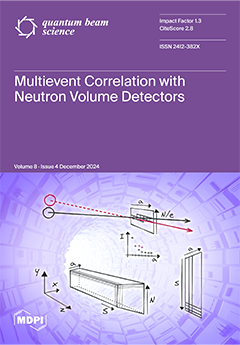Open AccessArticle
Development of a Macro X-ray Fluorescence (MA-XRF) Scanner System for In Situ Analysis of Paintings That Operates in a Static or Dynamic Method
by
Renato P. de Freitas, Miguel A. de Oliveira, Matheus B. de Oliveira, André R. Pimenta, Valter de S. Felix, Marcelo O. Pereira, Elicardo A. S. Gonçalves, João V. L. Grechi, Fabricio L. e. Silva, Cristiano de S. Carvalho, Jonas G. R. S. Ataliba, Leandro O. Pereira, Lucas C. Muniz, Robson B. dos Santos and Vitor da S. Vital
Viewed by 1281
Abstract
This work presents the development of a macro X-ray fluorescence (MA-XRF) scanner system for in situ analysis of paintings. The instrument was developed to operate using continuous acquisitions, where the module with the X-ray tube and detector moves at a constant speed, dynamically
[...] Read more.
This work presents the development of a macro X-ray fluorescence (MA-XRF) scanner system for in situ analysis of paintings. The instrument was developed to operate using continuous acquisitions, where the module with the X-ray tube and detector moves at a constant speed, dynamically collecting spectra for each pixel of the artwork. Another possible configuration for the instrument is static acquisitions, where the module with the X-ray tube and detector remains stationary to acquire spectra for each pixel. The work also includes the analytical characterization of the system, which incorporates a 1.00 mm collimator that allows for a resolution of 1.76 mm. Additionally, the study presents the results of the analysis of two Brazilian paintings using this instrument. The elemental maps obtained enabled the characterization of the pigments used in the creation of the artworks and materials used in restoration processes.
Full article
►▼
Show Figures





